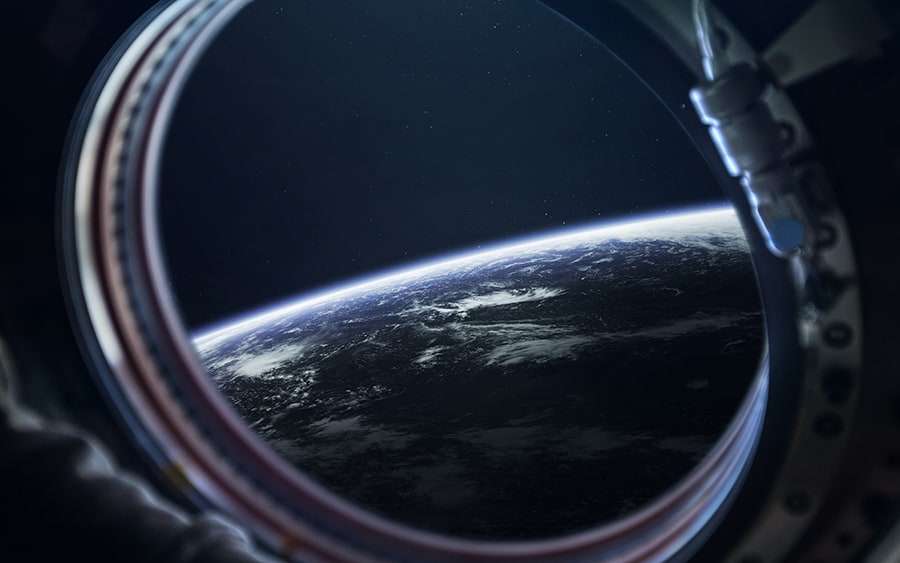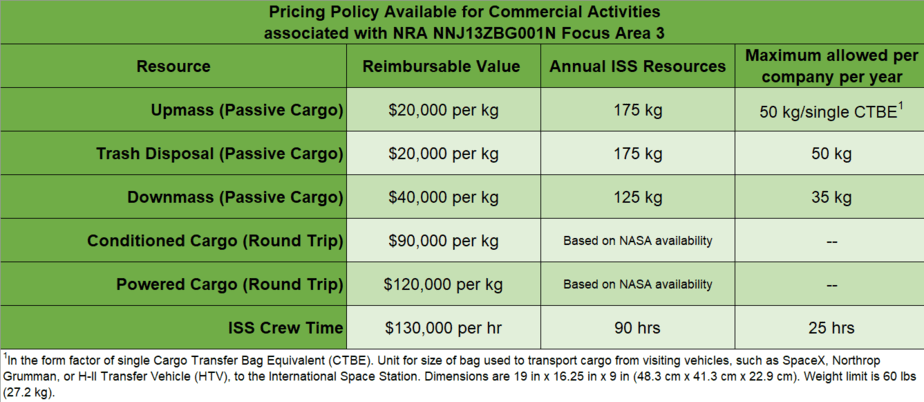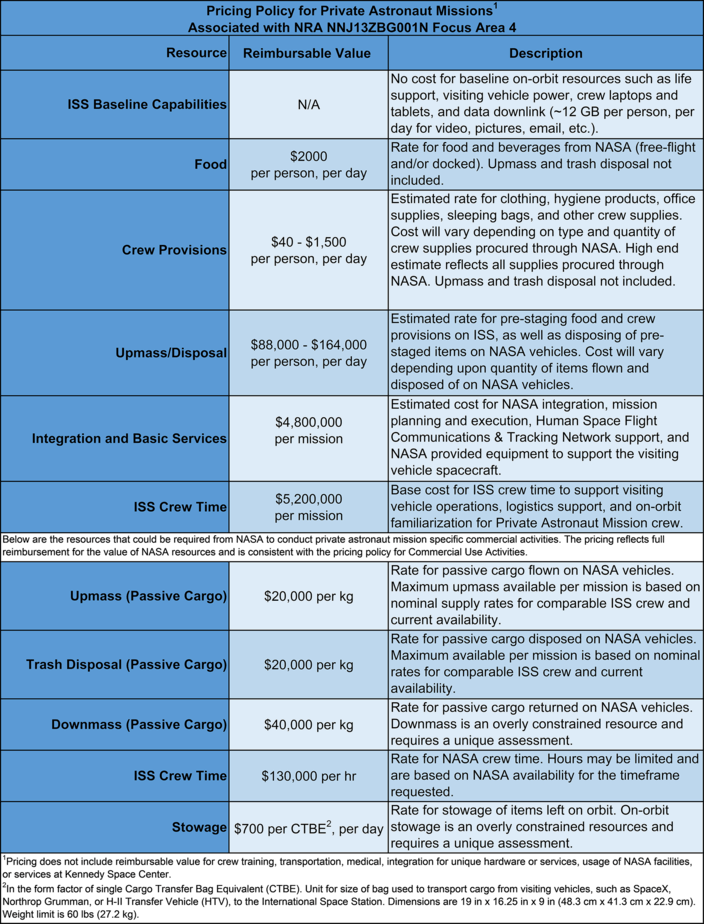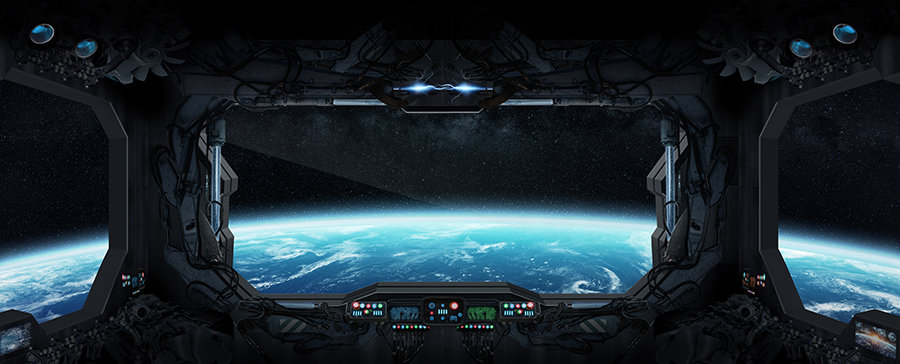In the future, tourism will extend from Earth into space, but the cost of commercial space flight will determine when it becomes a reality.
At the moment, civilians have to shell out a pretty penny for a ticket beyond Earth, but fear not! Each year, prices are dropping, making the fast-growing commercial space travel industry more accessible to everyday folks like you and me.
So, what’s the secret to making space travel affordable for the average Joe? Let’s zoom in on the current industry prices, especially for trips to Low Earth Orbit (LEO). LEO is the sweet spot between 100 to 1,200 miles above Earth’s surface, where the International Space Station (ISS) hangs out, about 250 miles up. Yup, space travel is no walk in the park!
The drop in rocket launch costs to LEO over the decades

The price of rocket launches today is insanely expensive. But compared to decades ago, it’s an incredible bargain.
When it comes to space travel, the cost is measured by price per kilogram. While whether treating space travel as a commodity is ethical is a separate debate, let’s focus on the technical details.
Each rocket has a weight limit and can only store so much fuel. The amount of fuel affects how much payload it can carry, with each kilogram of payload having its own cost. This covers parts, engineering, and maintenance for a space company.
| Rocket type | First launch date | Price / kilogram |
|---|---|---|
| Falcon Heavy | 2018 | $1,400 / kilogram |
| Vega | 2012 | $10,000 / kilogram |
| Falcon 9 | 2010 | $2,700 / kilogram |
| Taurus | 1989 | $20,400 / kilogram |
| Ariane 44 | 1988 | $17,900 / kilogram |
| Space shuttle | 1981 | $61,700 / kilogram |
| Saturn V | 1968 | $5,200 / kilogram |
| Soyuz | 1966 | $7,600 / kilogram |
| Titan II | 1962 | $31,000 / kilogram |
| Delta E | 1960 | $167,800 / kilogram |
| Vanguard | 1957 | $894,700 / kilogram |
Wondering how SpaceX managed to cut the cost of rocket launches? Here are 11 game-changing factors:
- Advanced technology: Embracing automated and autonomous systems, as well as better hardware and software.
- Vertical integration: Developing everything in-house to save money and speed up production.
- Bureaucracy: Adopting a start-up mindset, thanks to Elon Musk’s work culture.
- Industry growth: More competition in the commercial rocket industry driving down prices.
- Reusability of rockets: Giving launched rocket parts a second life.
- Maximizing commonalities: Using similar engines for economies of scale (United Launch Alliance, for example, uses three different engines, which leads to higher costs).
- Reinvestment: Pouring money back into research and development and learning from every launch.
- Availability of money: More venture capital up for grabs today.
- Design and simulations: Lowering computational costs for engineers to test designs.
- General tech advances: Growing demand for satellite-based internet, which means more rocket launches.
- Updated laws: The U.S. government supporting the commercial space sector, with NASA as just another customer.
The cost to send humans to LEO aboard the ISS

Space travel isn’t just about cramming people into tiny spaces like sardines. Travelers want a safe and enjoyable trip, especially when they’re paying big bucks for an out-of-this-world experience.
While we might not get first-class luxury on our way to LEO, travelers deserve a safe and comfy journey. So, how much does it cost to send a human to space? Let’s peek at NASA’s pricing table.
Keep in mind, these costs are for private astronauts traveling to the ISS during a time when Russia had a monopoly on ISS travel. This means the prices were naturally inflated.
Before SpaceX’s launch on May 30, 2020, NASA relied on the Russian space agency to transport American astronauts to the ISS. Astronauts forked over about $90 million for a seat and some cargo. This included training, preparation, launch, flight operations, landing, crew rescue, and a bit of cargo delivery to and from the station. As NASA spokesperson Stephanie Schierholz explained,
“This contract modification is $90,252,905.69 for the single crew mission seat in the fall of 2020, including all necessary training and preparation for launch, flight operations, landing and crew rescue for a long-duration mission as well as some limited crew cargo delivery to and from the station.”

Photo Credit: NASA

Traveling to the ISS costs a fortune, no doubt about it. C’mon, who’s got $90 million lying around for a space joyride? But if you do, the Russian space agency will happily reserve you a seat.
Now, what if you just wanna zip up to Low Earth Orbit (LEO) and back without docking at the ISS? Your choices are limited, but Blue Origin and Virgin Galactic are working on flight packages. The catch? These are suborbital flights only. The price tag of $200,000 to $400,000 might seem tempting, but you won’t get the full orbiting-Earth experience.
What’s a practical low cost to send space tourists to LEO?
Let’s chat about SpaceX’s Falcon Heavy, a true beast of a spacecraft. Launching it costs customers $90 million, but the real cost for SpaceX is lower when you factor in profits. With a payload capacity of 63,800 kilograms to LEO, we’re looking at $1,410 per kilogram.
Now, we can’t just shove a bunch of people into a dark, empty payload room, so let’s say we give 25 passengers a comfy ride. We need to account for each person’s weight, a cozy seat, food, and luggage. That gives each traveler a generous 2,552-kilogram allowance, which easily covers them, their stuff, and essential flight hardware—all while promising a luxurious experience.
So, if we split the cost among passengers, each lucky space tourist would pay a much more reasonable $3,600,000 – a far cry from the initial $90 million.
The real economics of rocket launches to LEO

In a free market, supply and demand rule. We have to think about the demand for commercial astronauts and the supply of launches. If demand is higher than supply, rocket seat prices will skyrocket (pun intended).
Even if the real cost of a rocket seat drops to $3,600,000, the price per seat could still be in the tens of millions. For example, SpaceX’s successful May 30, 2020 launch of two NASA astronauts to the ISS cost an estimated $55 million per astronaut. Despite the lower real cost, SpaceX could charge $55 million since the next option with the Russians cost $90 million. That’s a textbook economic monopoly.
So, how do we keep prices fair and make space flights more affordable for everyone? Simple – increase supply with competition until we find a market-clearing price.
Without competition, monopolies can form, leading to stagnant prices and less innovation. That’s bad news when we’re trying to perfect reusable rockets to cut refurbishment costs. Elon Musk thinks that if SpaceX can reuse the Falcon 9, the cost would be,
“$200,000 to $300,000 per flight in fuel and oxygen versus a $60 million rocket.”
I’m rooting for the space launch industry to grow into a multi-trillion-dollar business. As it matures, it could become like the airline industry today. My dream? To see rocket launches become as common and safe as hopping on a plane.
The hard cap for space flight costs
Jeff Greason and James C. Bennett dug deep into space flight costs in their paper “The Economics of Space: An Industry Ready to Launch.” They crunched the numbers to find the lowest possible price for a round-trip ticket for one lucky space traveler.
“One way to think about the cost of space flight is to start with the fact that the energy required to lift a given human being to low Earth orbit (LEO) is roughly 40 times that needed to transport a person from Los Angeles to Sydney, Australia. (That is based on a rough energy-only calculation, ignoring the fact that the aircraft does not have to carry its own oxidizer, the harsher environment of space compared to the atmosphere, and other challenges. Even taking all those into account, the disparity is still enormous.) Yet a quick Internet search discloses that a round-trip nonstop coach ticket between LAX and SYD costs $1,068; 40 times that is $42,720—a far cry from the commercial price for a ride on a Russian capsule to the International Space Station—currently the only commercial service available—at $70,000,000–$80,000,000, round-trip.”
Now, hold up—this comparison isn’t flawless. The authors compared the energy cost of a one-way space trip to a round-trip commercial flight. They also mentioned,
“That is based on a rough energy-only calculation, ignoring the fact that the aircraft does not have to carry its own oxidizer, the harsher environment of space compared to the atmosphere, and other challenges. Even taking all those into account, the disparity is still enormous.”
Despite these caveats, let’s say we consider a price that’s ten times higher than the estimated cost of $42,720. That still lands us at $427,200—a downright steal compared to today’s eye-watering $55 million price tag!
Conclusion
We’re living in a thrilling time for human progress, with commercial space flight costs dropping every year.
This is a fantastic era for space enthusiasts and humanity as a whole. Right now, launch services mostly serve customers like NASA for research and exploration, the military for their top-secret stuff, and private companies for commercial satellites.
Adding space tourism to the mix will spark competition and push the industry to new heights. High launch costs limit the number of missions we can send up, but as those costs come down, we’ll be able to explore and expand into the cosmos even more.
Elon Musk thinks launch costs could plummet to a mere $271.90 per kilogram in the near future. If that happens, you can bet I’ll be first in line to book my flight!
What do you think about commercial space flight costs? How low do you reckon the price of a commercial space flight to LEO will go?
